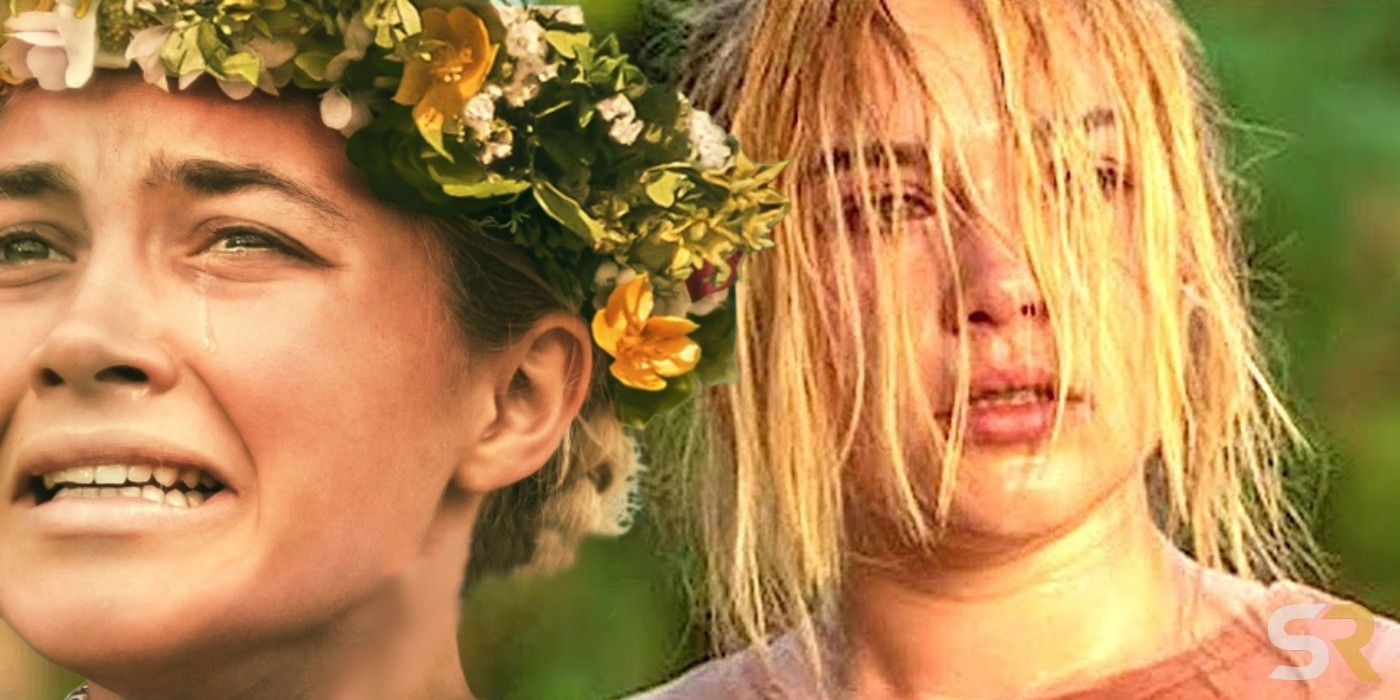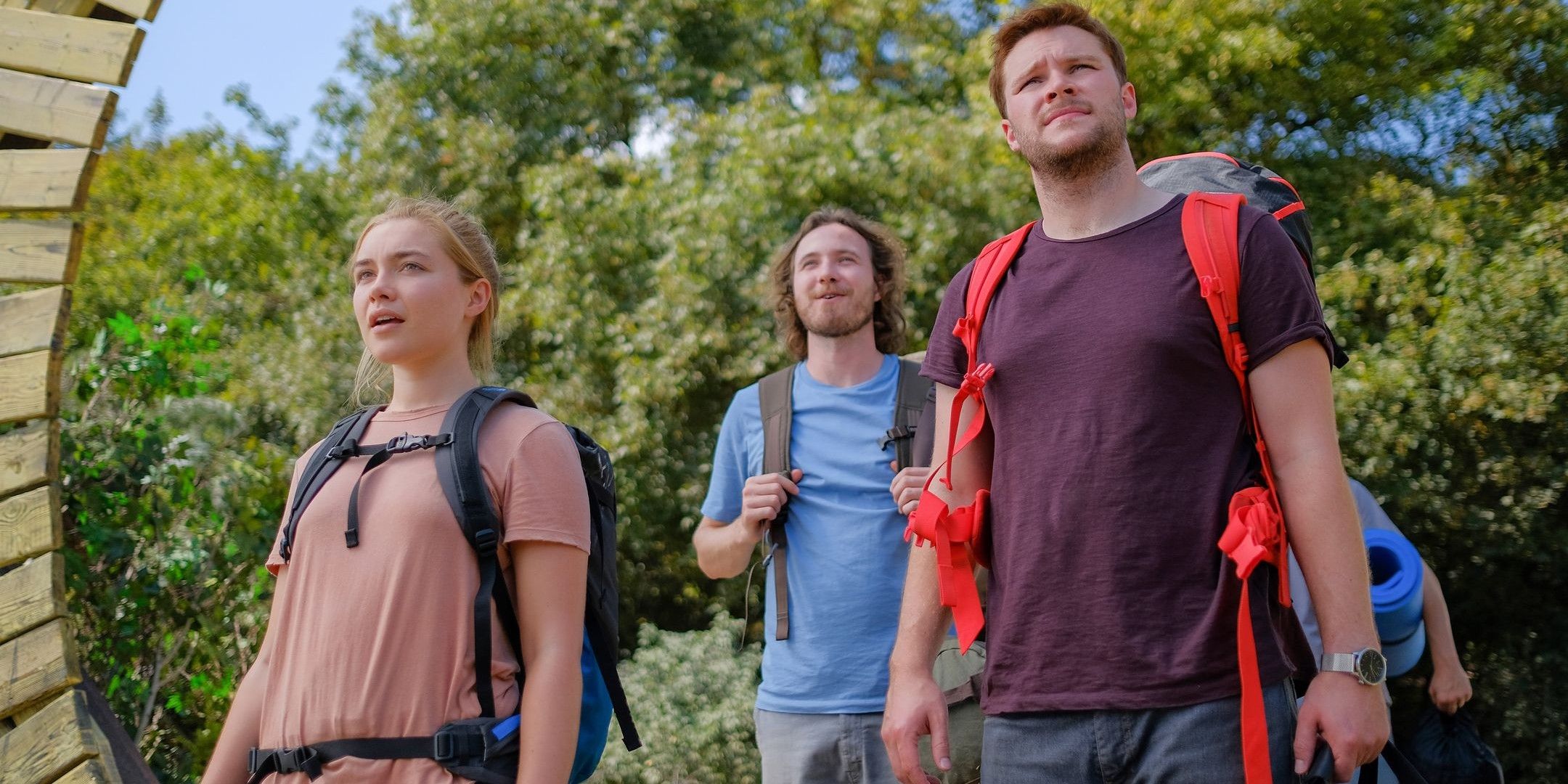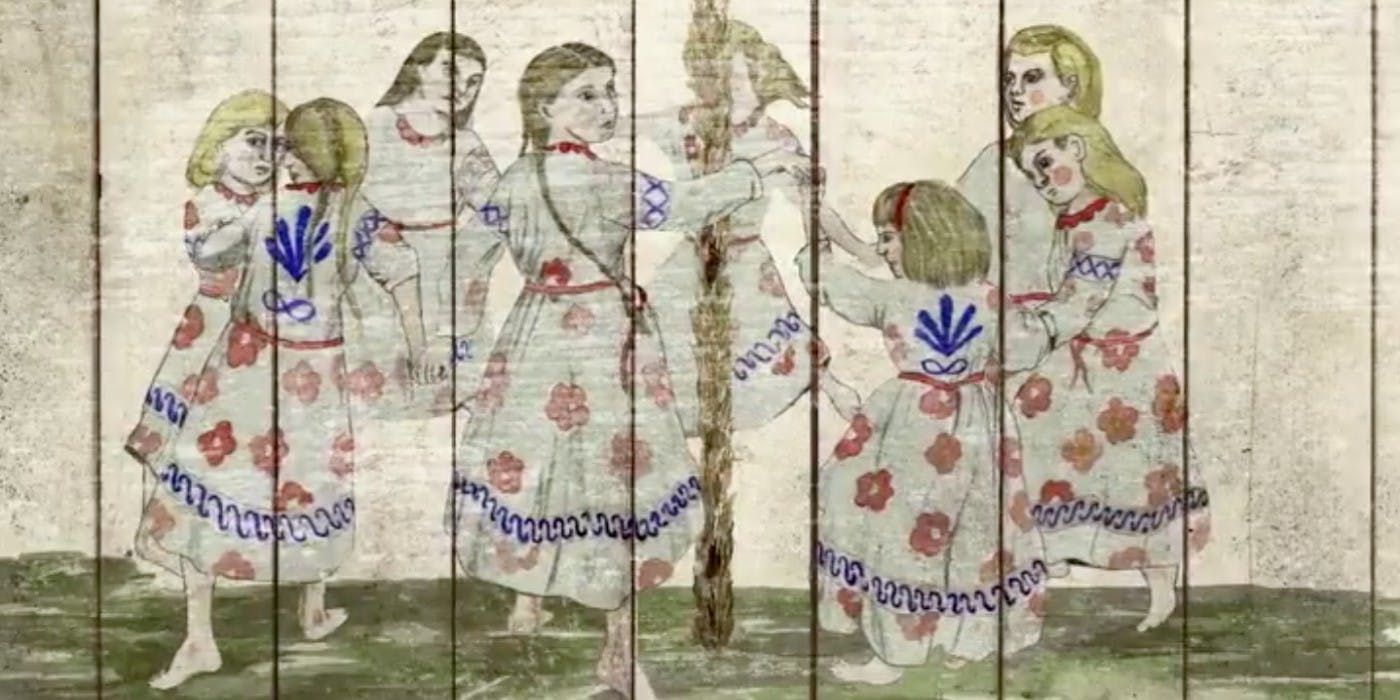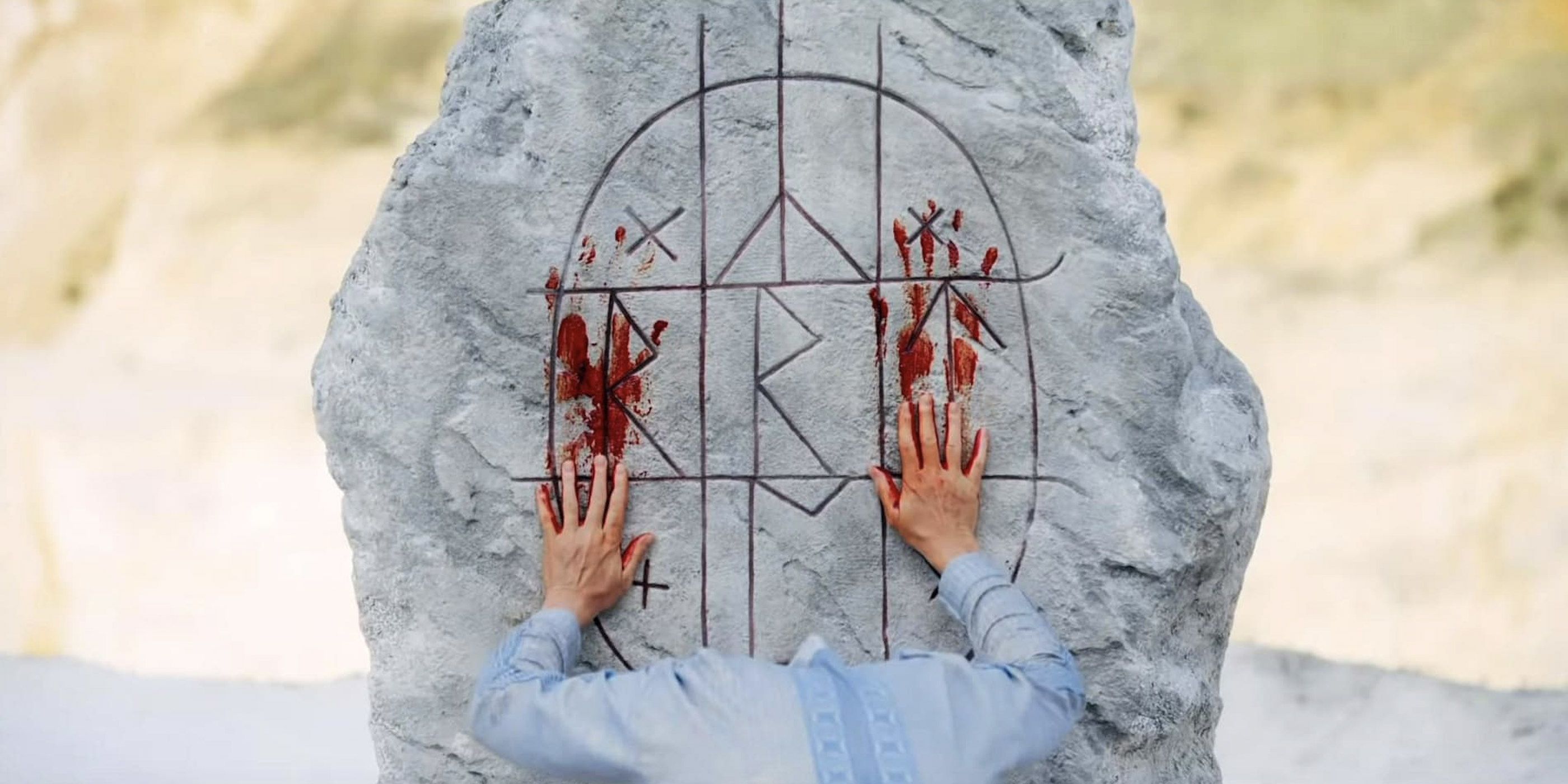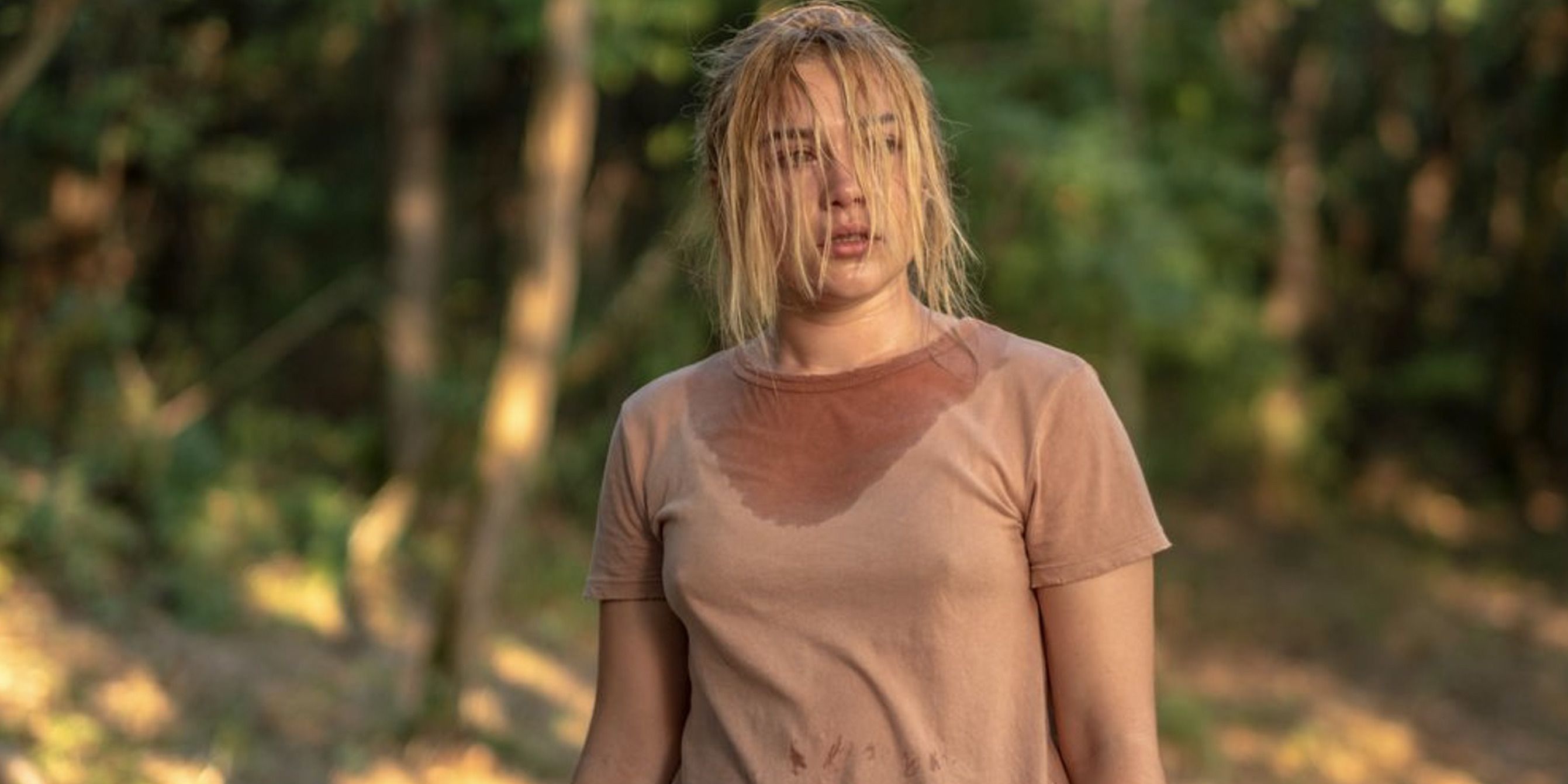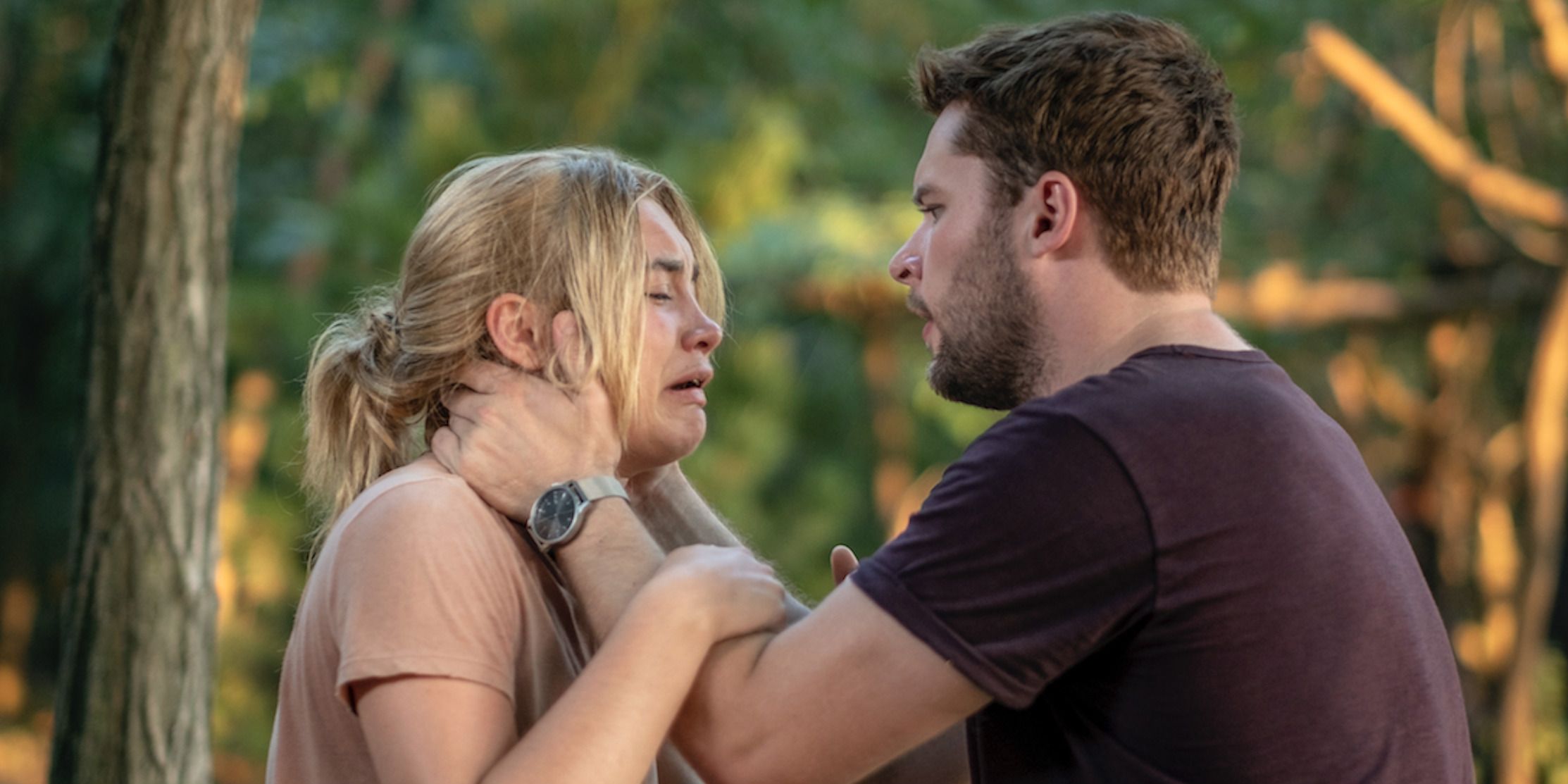WARNING: Spoilers for Midsommar.
The Director's Cut of Midsommar has a number of added scenes packed with new meaning. Directed by Ari Aster, the 147-minute theatrical cut released in July 2019. Two months later, Aster’s original 171-minute cut was released in U.S. theatres. Overall, the new scenes provide extra context for character motivations and Swedish rituals. Aster’s additional Midsommar sequences mostly take place before the final act.
Midsommar explores how Dani copes and grieves with her psychological trauma. At Hårga, she comes to the realization that commune members grieve together and share each other’s pain. In that sense, Dani temporarily overcomes her internal conflict. While some director's cuts deviate significantly from the theatrical cut, Midsomamar's added scenes serve more to expand and flesh out what was already there as opposed to making any major thematic or narrative changes.
Most characters are benefitted by additional screentime, and the theatrical cut's cryptic plot is much more clear thanks to the added story, enhancing the movie in several ways, although it's not a clear cut improvement, as some viewers may still prefer the ambiguity of the version originally released in theaters.
Christian Gaslights Dani For Ruining Surprise Sweden Invite
In both versions of Midsommar, the inciting incident remains the same. Dani’s sister kills her parents and then kills herself. Naturally, the tragedy affects Christian’s relationship with Dani and his previously-arranged plans for a Swedish trip with only his male college friends. Christian refuses to abandon Dani at her lowest moment and invites her along. Through brief moments of exposition, Midsommar underlines Christian’s skepticism, but also his concern for Dani’s mental health.
From the start, the Midsommar Director’s Cut implies that Christian should not be trusted. During a party sequence, Dani learns about the scheduled trip to Sweden, and then privately questions Christian about his intentions. She describes Christian’s actions as “really weird” - twice - and the confrontation leads to two important revelations. First, Christian notes that he has no idea what to write about for his thesis. Then, Christian informs Dani that he’d planned a “romantic" invite moment, and that she’d ruined it. He gaslights her - meaning, he manipulates Dani by suggesting she's not quite thinking right; a recurring theme in Midsommar.
In comparison to the theatrical version, this new Midsommar scene immediately establishes even more sympathy for Dani. As for Christian, Aster implies that the character doesn’t have any direction in life, at least during this particular chapter. The new sequence builds suspense for the Swedish journey, and also informs audiences about Christian’s lack of preparation, which is crucial during a later confrontation scene with Mark; a character who’s been meticulously planning for his own anthropology research project.
Dani Reflects During Swedish Car Ride To Hälsingland
When the group arrives in Sweden, a brief car ride sets a specific mood in the Midsommar theatrical version. Aster literally turns the frame upside down, suggesting that the Americans (and the audience) are about to have an enlightening and awkward experience. This particular sequence highlights Aster’s visual artistry, but says little about the four-hour journey from the airport to Pelle’s commune.
In the Midsommar Director’s Cut, Aster extends the car ride sequence. As Marks continuously talks, Dani yawns. One character is the chatty member of the group, the other is emotionally exhausted. Dani also questions Josh about a “Nazi Language” book that he’s reading - “ask Pelle,” he says. As the group talks about thesis projects, Pelle informs Dani that her boyfriend “was already brainwashed when I found him.”
Aster further establishes Pelle as a questionable figure. He’s likable on the surface, evidenced by his early conversations with Dani. But Pelle clearly has ulterior motives, as he adoringly gazes at Dani while discussing the May Queen ritual prior to the trip. As a whole, Aster’s extended car ride sequence highlights character profiles for each individual: Mark is just along for the ride, Dani is tired and depressed, Christian is naive, Josh is passive, and Pelle just may be the mastermind of a secret plan (which proves to be true). For viewers that need a little extra narrative direction, Aster subtly guides them along with the Midsommar Director’s Cut.
Christian Researches For Anthropology Thesis
The Midsommar Director’s Cut shows Christian researching for his thesis paper. In this version, he’s not walking around aimless like Mark, but rather trying to accomplish specific goals. He asks locals about rituals and the grieving process. Christian is told that “We grieve and celebrate.”
In Midsommar’s theatrical version, Christian isn't so inquisitive. Dani and the others struggle with the shocking suicide ritual experience, and Christian suddenly informs Josh that he plans to focus specifically on Pelle’s commune for his thesis project. For dramatic purposes, Aster builds suspense and creates more conflict, but the original film doesn’t fully explore Christian’s motivations for the trip. Pelle reveals vague details about previous conversations that he’s had with Christian about research, but Aster never shows Christian’s academic pursuits.
The new Midsommar research scenes emphasize the distance between Christian and Dani, along with the idealogical differences between Christian and the commune. Pelle and the locals seem to understand that Christian can be easily manipulated, as detailed through a subplot involving a young woman’s ritualistic attempts to seduce him. Aster’s new scenes set up Christian’s tragic fate. Pelle and his Swedish peers see right through Christian. Ultimately, Christian is forced to wear a bear carcass during a ritualistic sacrifice. His “research,” as shown in the Midsommar Director’s Cut, is merely a self-serving and misguided attempt to make himself look better.
Dani Watches A Would-Be Suicide Ritual
Both versions of Midsommar feature a graphic ritualistic suicide scene, in which two 72-year-olds jump to their deaths to complete their seasonal life cycles. Given what Dani experienced back in America, she's obviously shocked upon being confronted with even more death. She stumbles away and cries, trying desperately to process what she's experiencing.
The Midsommar Director's Cut initially appears to double-down with another shocking suicide sequence. One of the commune members invites Dani to a "special ceremony" that first appears to be a play involving a tree. Soon, a young boy - dressed as a tree - volunteers for a ritual, and states "What's brave is going home." He's held up by two commune members and has a large rock placed on top of him. Just when it seems like he'll be tossed into a body of water, leading to his certain death, he's let go for proving his bravery. The moment precedes Dani's look of absolute horror, as it's not entirely clear if the ritual was staged or real.
In this case, the new Midsommar scene doesn't add much beyond what's already been established by the earlier suicide sequence. Prior to the event, Dani flippantly states "What's happening now?," almost like she's already moved past the horror she witnessed not long before. For Aster, he most likely incorporated the sequence for a proper psychological scare, and to set up the subsequent new scene involving Dani and Christian.
Christian Gaslights Dani One More Time
In the original Midsommar, Christian's actions often leave Dani speechless. She stares at him after questionable comments, and the subtext is thick. The same applies to the Midsommar Director's Cut, only Aster includes a conversation scene that complements the opening act conflict between Dani and Christian.
After the "special ceremony," Dani is purely freaked out after another bizarre experience. She then privately converses with Christian, who has fully shifted his attention to anthropological research. He talks about "the level of tradition" and "privilege," all the while unnerving Dani with his demeanor and insulting comments, specifically that Dani has been too nice (!) and trying to capitalize on the fact that Christian forgot her birthday. Soon thereafter, Dani asks for a sleeping pill, and Christian is targeted by the commune members, as shown in the original version.
For Midsommar's storyline, the new conversation scene further positions Christian as the obvious villain, even though he will ultimately be victimized by the Swedish community. His dismissive attitude creates more sympathy for Dani; a shot of cinematic adrenaline to get audiences ready for the final act. Aster makes the character dynamics clear as day. Overall, the new Midsommar scenes will please viewers looking for obvious narrative direction, though some may prefer the original theatrical version where specific moments are more cryptic. Still, there's much to enjoy in the Midsommar Director's Cut.

